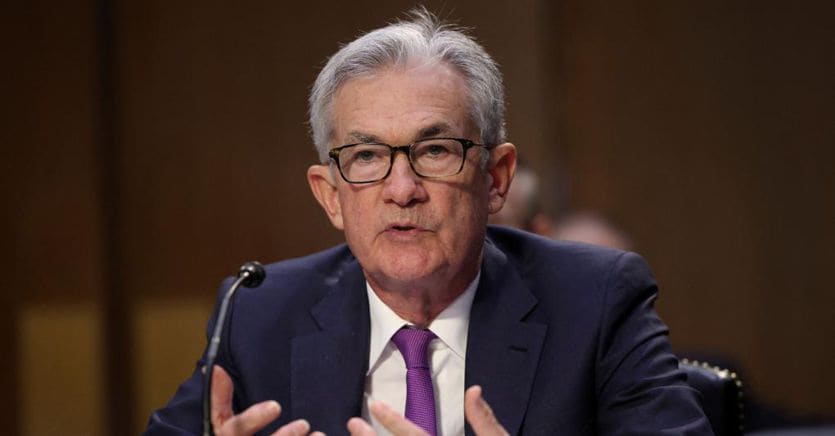Inflation is high. However, rates will remain low, at 0-0.25%. Until the unemployment rate returns to levels consistent with the definition – however not explicit in a target, an objective – of maximum employment. This is the main message of the press release published by the Federal Reserve at the end of the December meeting. “With inflation exceeding the 2% target for some time, the Committee (of monetary policy, the Fomc, ed), he expects that it will be appropriate to maintain the range (of the Fed Funds rate, the official rates, ed) until labor market conditions have reached levels consistent with his assessment of maximum employment. ‘
It also accelerates tapering: purchases of government bonds will be reduced, from January, by 20 billion dollars a month, and those of mortgage-backed securities by another 10 billion dollars, to fall to 40 and 20 billion respectively. The reduction in purchases will continue at this pace, which is double that decided at the beginning of November.
The message of the official press release, which is partially reassuring for the markets – but not for those who fear that inflation could fuel price expectations – is partially contradicted by the “dots”, the “dots” with which individual governors signal in quarterly projections their individual interest rate forecasts. The median (more correct than the average, in these cases) of the forecasts for 2022, indicates an official cost of credit at 0.75-1%, compared to 0.25% in September. For 2023 it goes to 1.5-1.75% from the previous one percent, and for 2024 to 2-2.25% from 1.75%. This is three-four more hikes for next year and three more hikes for 2023.
The unemployment rate, which dropped to 4.3% at the end of 2021 (from 4.8% expected in September) should in fact drop to 3.5% next year and remain at this level. The “long-term” rate, which corresponds to a target – even if the Fed evaluates the “maximum employment” with a plurality of indicators – of 4 percent. Inflation projections are also up: 2.6% in 2022, from the 2.2% indicated in September, but 2.3% in 2023, from 2.2% in September and 2.1% in 2023.
Growth appears less robust this year (5.5% versus 5.9% in September), faster in 2022 (4% versus 3.8%) and even slower in 2023 (2.2% from 2 , 5%) to then settle at 2% in 2024, against a “long-term” level of 1.8%. It is no longer a “temporary” inflation, as it was in November; and the increases – noted President Jerome Powell at a press conference – “have expanded to a broad spectrum of goods and services”. However, the trend in prices is destined to return towards the (now “average”) objective of 2% over the time horizon of monetary policy.
